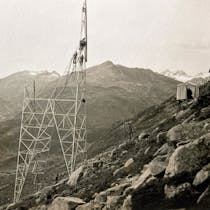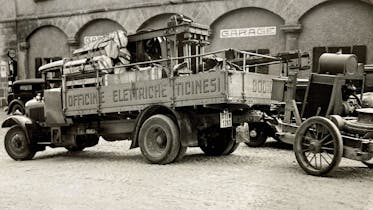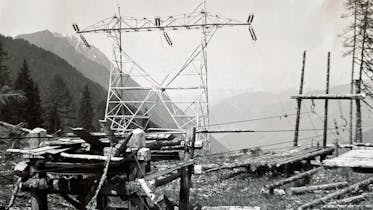
«Traffic news: seven-kilometre traffic jam on the A2 outside the Gotthard northern portal. The Göschenen entrance is blocked». This is a message that every Swiss citizen is very familiar with from the radio. That’s because there is nothing more typical of the holiday season than traffic jams just outside the Gotthard Tunnel. That’s not surprising, seeing as the Gotthard route is an extremely central connection on the north-south axis through the Alps. However, the importance of the Gotthard route applies not only to road traffic, but also to electricity transmission. Swissgrid's extra-high voltage line Mettlen – Airolo runs via the Gotthard Pass and is vital for north-south electricity transport. In winter, when Italy imports large amounts of electricity from Switzerland, the maximum transport capacity of the line is about 1 GW, which is roughly equivalent to the output of the Gösgen nuclear power plant. Another task assumed by the 220-kilovolt line is to transport energy away from regional hydro-power plants. The line between Mettlen and Airolo has been working reliably for almost 90 years now. The line was put into operation in 1933 with a voltage of 150 kilovolts, which was subsequently increased to 220 kilovolts at the end of 1950s. Several pylons, conductors or insulators have of course been replaced in the meantime.
Hans Bandi, owner of the bed&bike Tremola in Airolo, has a very special relationship with this line. His grandfather was involved in its construction and went on to become a kind of installation supervisor. Bandi has found photographs in his grandfather’s photo albums that spectacularly document the Herculean construction task in the 1930s.
The wind park on the legendary Gotthard Pass is writing a new chapter in the history of this location which is so symbolic of national unity. Well before this pioneering project, another endeavour that was decisive for the development of the country was undertaken in the previous century: the commissioning of the Gotthard high-voltage line in 1933. This line was originally intended to connect the electric power plants of Officine Elettriche Ticinesi with those of Olten-Aarburg. It soon became an important component for energy trading at international level and secured Switzerland a strategic role in energy exchange at the heart of Europe.
I discovered evidence of this historic event in the photo album of my grandfather Hans Bandi (1908-1952): he initially worked as a rope access technician during the construction of the pylons, before being appointed as a supervisor for the Gotthard line. The pictures show pylons, construction phases and material transport, as well as workers in their accommodation, during breaks or posing. They are documentary photographs which reveal the working conditions of these men, who could move at great heights and without whom this line could not have been realised. There are simple notes on the back of the photos, such as the date, location, pylon number or names of colleagues.
The 56 km power line between Lavorgo and Amsteg was erected within five months between June and December 1932. 168 pylons were constructed in total, many in inaccessible places. Due to the difficult transport conditions, the pylon parts were allowed to weigh a maximum of 300 kg and could be no more than 8 metres long. Transport was by donkey, and cargo lifts and cableways were erected in especially difficult locations. In addition, new roads were built or old mule tracks expanded to provide access for trucks.
Bibliography
- Aare Tessin AG für Elektrizität, Jubiläumsband zum 50-jährigen Bestehen des Unernehmens, 1946
- Olten/Bodio 20 Jahre Atel 1936-1956, 1956
- Die Hochspannungsleitung über den Gotthard, Neue Zürcher Zeitung, 4 October 1933













